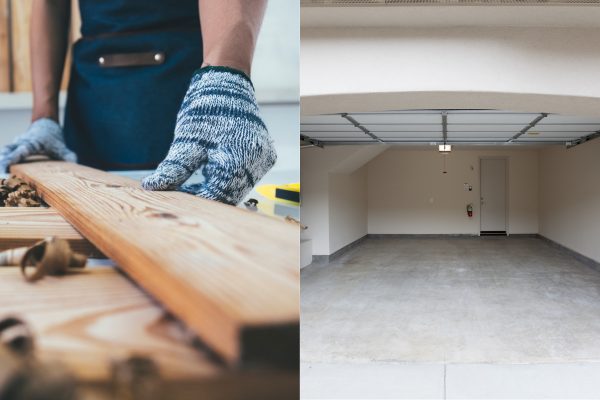But it is precisely in these areas that good lighting is not only a matter of comfort, but also of safety, efficiency, and quality of life. In a dark basement, you are more likely to trip, in the garage you overlook tools, and in the workshop, shadows or insufficient light make precise work difficult.
In this article, you will learn why careful lighting makes sense in basements, workshops, and garages, what requirements and standards need to be observed, which light sources and technical features are ideal, how to implement lighting design, and what budget you should expect.
Why lighting in basements, workshops, and garages is so important
1. Safety and accident prevention
A poorly lit basement or dark workshop significantly increases the risk of falls, tripping hazards, and accidental collisions with shelves or tools. Adequate lighting is essential, especially in basement rooms where there are wall projections, steep steps, or uneven floors. In garages, good lighting prevents obstacles from being overlooked when parking and leaving.
2. Functionality and usability
If you use your garage not only as a storage room but also as a workshop or hobby room, you need to have good lighting in these areas too—for example, for screwing, sawing, drilling, or precision work. Without suitable lighting, this can be unpleasant or prone to errors.
3. Energy efficiency and cost savings
Modern LED technologies enable bright lighting with minimal power consumption. Compared to traditional light sources (incandescent bulbs, halogen, fluorescent tubes), LEDs offer significant savings. LED solutions consume up to 70–80% less energy and last significantly longer. In addition, maintenance and replacement costs are incurred less frequently.
4. Comfort and well-being
Good lighting improves mood and concentration—even when working in the basement or workshop. Especially if you spend several hours there, a pleasant color temperature and glare-free light create a more relaxed environment.
5. Deterrent and security against burglary
In garages, lighting with motion detectors or bright lamps can deter potential burglars by making suspicious movements visible. This aspect is particularly important if the garage has direct access to the house or is used as a storage room.
Requirements, standards, and basics
Before purchasing and installing lights, it is advisable to have a certain basis for planning. Here are the most important factors:
Illuminance (lux)
In rooms used for work (workshops, hobby rooms), a basic illuminance of at least 500 lux should be achieved. Significantly lower values are sufficient for general traffic areas or storage areas, but 500 lux is a good target value, especially for activities that require visual acuity and precision.
Maintenance factor
When planning lighting, it is important to consider not only the initial output, but also the decline due to dirt, aging, dust deposits, etc. The so-called maintenance factor is used to ensure that the minimum illuminance is still achieved even after years of operation. In workshops, this factor can be crucial, as grease, chips, and dust can quickly impair luminaires.
Glare limitation / UGR
Another important value is the UGR value (Unified Glare Rating). Low UGR values (e.g., < 19) are desirable to avoid glare, especially with shiny workpieces or reflective surfaces. Good results can be achieved here with LED panels and luminaires with diffusers.
Color temperature (Kelvin) and color rendering (CRI / Ra)
- For workshops and hobby areas, neutral or slightly cool white light in the range of 4,000 to 6,500 Kelvin is recommended. 4,000 K is often considered a good compromise – productive and pleasant at the same time.
- Precision work, color measurements, or work involving small details benefit from a high color rendering index CRI (Ra) of > 90 if possible. This ensures that colors are rendered as true to life as possible.
Protection class (IP) / robustness
Basements, garages, and workshops are often damp or dusty environments. Therefore, luminaires with a protection class of IP 44 or higher are recommended – ideally IP 54 to IP 65. Shock-resistant construction is also advisable (e.g., with a break-proof housing or cover).
Space and installation situation
- In rooms with low ceilings, flat luminaires, light strips, or recessed ceiling variants should be preferred.
- In rooms with high ceilings (e.g., workshops), a combination of room and workplace lighting may be advisable.
- Avoid casting shadows: Avoid positioning lights behind the worker so that their own body does not cast shadows on the work surface.
- In elongated rooms, continuous lighting or several parallel rows of lights are recommended to ensure even light distribution.
Conclusion
Basements, workshops, and garages are often underestimated areas when it comes to lighting—but this is precisely where light is particularly important: for safety, comfort, and productive work. With careful planning, a basic understanding of illuminance, light quality, and technical requirements, and the use of modern LED luminaires, each of these “secondary areas” can be transformed into usable spaces.







